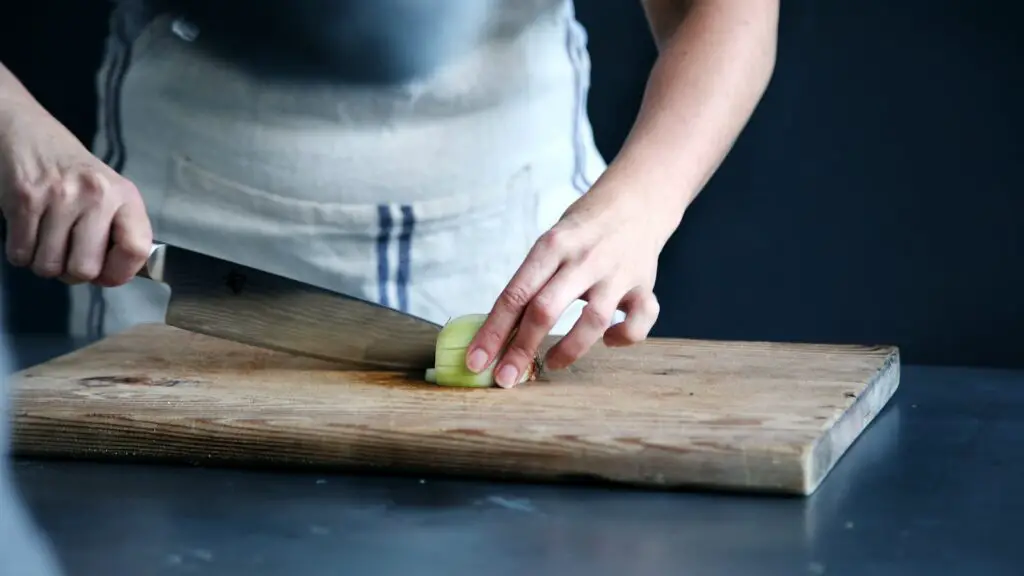In recent years, the concept of selling homemade food has transitioned from a hobby to a lucrative business opportunity. With more people seeking authentic, homemade culinary experiences, there’s never been a better time to turn your kitchen into a source of income. This guide aims to navigate you through the journey of making your culinary passion profitable, emphasizing the importance of creativity, legality, and marketing in the process.
Legal Considerations: The Foundation of Your Food Business When You Sell Homemade Food
Before diving into the culinary adventure, understanding and adhering to local food laws and regulations is crucial. This involves:
- Researching local laws: Requirements vary significantly from one location to another. Make sure you’re well-informed about the specific regulations in your area.
- Obtaining permits and licenses: Depending on your location, this could range from a simple registration to more comprehensive food handler’s permits.
- Complying with health and safety guidelines: Ensuring your kitchen and food handling processes meet health codes not only keeps you legally compliant but also builds trust with your customers.

Finding Your Niche: Identifying What to Sell
The key to standing out in the homemade food market is finding your unique selling proposition. Consider:
- Target audience: Who are you cooking for? Health-conscious individuals, busy families, or gourmet food lovers?
- Market demand: Research current food trends and consumer preferences in your area.
- Competition: Identify how you can offer something different or better than what’s already available.
Developing a Menu: Crafting Your Culinary Identity
Your menu is a reflection of your culinary style and creativity. When designing it, remember to:
- Choose home-friendly recipes: Focus on dishes that can be efficiently prepared in a home kitchen.
- Consider dietary needs: Offering gluten-free, vegan, or allergen-free options can attract a wider audience.
- Experiment: Unique flavors and ingredients can make your offerings stand out.
Sourcing Ingredients and Supplies: Quality Meets Efficiency
The quality of your ingredients directly affects the final product. To manage this:
- Source locally: Supporting local suppliers or farmers’ markets can ensure freshness and potentially lower costs.
- Buy in bulk: Look for cost-effective solutions for high-quality ingredients.
- Invest in equipment: The right tools can increase your efficiency and consistency.
Pricing Your Products: Balancing Costs and Perceived Value
Pricing is a delicate balance between covering your costs and offering value to your customers. Consider:
- Calculating all costs: Include everything from ingredients to packaging and even utilities.
- Competitor analysis: Understanding how similar products are priced can help you position yourself in the market.
- Profit margins: Set prices that are competitive yet profitable.
Packaging and Branding: The Visual Appeal of Your Business
Your brand is the emotional and visual identity of your business. To develop an effective branding and packaging strategy:
- Create a memorable brand: Your brand should reflect your food’s personality and appeal to your target audience.
- Invest in packaging: Professional and visually appealing packaging can significantly influence purchasing decisions.
- Label correctly: Include essential product information and allergen warnings to build trust and transparency.
Marketing Your Products: Spreading the Word
Effective marketing can make or break your homemade food business. To get your products noticed:
- Leverage social media: Platforms like Instagram and Facebook are perfect for showcasing your creations.
- Collaborate locally: Partnering with local businesses or influencers can broaden your reach.
- Get involved in the community: Attend local events or farmers’ markets to connect with potential customers.
Taking Orders and Managing Logistics: Streamlining Your Operations
Efficiency in order and logistics management can enhance customer satisfaction and encourage repeat business. Implement systems for:
- Ordering: Whether through social media, a website, or food delivery apps, make it easy for customers to buy your products.
- Inventory management: Keep track of what you have on hand and what needs to be ordered.
- Customer service: Addressing feedback and concerns promptly can build a loyal customer base.

Scaling Your Home-Based Food Business: Planning for Growth
As demand for your homemade food grows, consider ways to expand your operations without compromising quality. This might include:
- Exploring commercial kitchens: If your home kitchen can’t keep up with demand, renting a commercial space part-time could be a solution.
- Hiring help: Bringing on additional hands or outsourcing certain tasks can free you up to focus on the business side.
- Expanding your offerings: Continuously innovating your menu keeps customers interested and can attract new ones.
Tips for Success
As you navigate the complexities of running a homemade food business, keep these tips in mind:
- Stay Flexible: The food industry is constantly evolving, with new trends emerging all the time. Be open to adapting your menu and business model to keep up with these changes.
- Focus on Quality: Never compromise on the quality of your ingredients or your cooking. Your reputation depends on the consistency and excellence of your products.
- Engage with Your Community: Building a loyal customer base is about more than just transactions. Engage with your customers, listen to their feedback, and become a valued part of your local community.
- Keep Learning: Whether it’s improving your cooking techniques, exploring new marketing strategies, or understanding the latest food safety regulations, continual learning is key to your success.
The Potential is Unlimited
The journey of selling homemade food is filled with challenges and rewards. By adhering to legal guidelines, finding your niche, and continuously engaging with your customers and community, you can create a sustainable and profitable business. Remember, the most successful food entrepreneurs are those who combine their passion for cooking with a strong business acumen and a dedication to customer service.
Whether you dream of running a full-time food business from your kitchen or simply looking for a side hustle to share your culinary creations, there’s a market for high-quality, homemade food. With the right approach, your kitchen can indeed become a profitable business, bringing joy and delicious meals to people’s lives while providing you with a fulfilling and profitable career.
Embrace the journey, learn from every experience, and never underestimate the power of a home-cooked meal. Your kitchen is the starting point of a deliciously rewarding adventure.
In Conclusion: The Joy of Sharing Your Culinary Creations
Selling homemade food is more than just a way to make extra money; it’s an opportunity to share your passion for cooking with others and become part of a community that values authenticity and creativity. As you embark on this journey, remember to stay organized, adhere to quality standards, and remain responsive to customer feedback. These elements are crucial for sustaining and growing your business in the long term.
Starting a business selling homemade food might seem daunting at first, but it’s also incredibly rewarding. You have the opportunity to make a significant impact on your local food scene, introduce people to new flavors and dishes, and, most importantly, turn your culinary passion into a profitable venture. It’s about more than just the food; it’s about building relationships with your customers, understanding their preferences, and creating a community around your brand.

FAQ: Selling Your Homemade Food
Is it legal to sell homemade food?
Yes, it’s legal to sell homemade food, but you must comply with local regulations, which vary by area. Research your local cottage food laws, obtain necessary permits, and follow health and safety guidelines.
How do I find out what permits I need to sell homemade food?
Contact your local health department or food regulatory agency. They will provide information on the specific permits and licenses required to legally sell food from your home in your area.
Can I sell any type of homemade food?
The types of food you can sell from home are often restricted by local cottage food laws. Typically, non-perishable foods are allowed, but perishable items may have stricter regulations.
How do I price my homemade food products?
Calculate all your costs, including ingredients, packaging, utilities, and any permits or licenses. Look at similar products in the market for pricing guidance, then set a price that covers your costs and includes a profit margin.
Where can I sell my homemade food?
You can sell your food at local farmers’ markets, community events, online via social media or a website, through food delivery apps, or by collaborating with local businesses.
How important is branding for my homemade food business?
Branding is crucial. It differentiates your products, creates a memorable impression, and builds trust with your customers. Invest in a distinctive logo, packaging, and consistent messaging across all platforms.
What are some effective marketing strategies for my homemade food?
Utilize social media to showcase your products, engage with customers, and offer promotions. Network with local businesses and influencers to expand your reach. Participating in community events can also increase visibility.
Do I need insurance for selling homemade food?
Yes, obtaining liability insurance is highly recommended to protect your business from claims related to illness or injury caused by your products.
How can I ensure my homemade food products are safe to eat?
Follow food safety guidelines meticulously, including proper storage, handling, and preparation of food. Regularly attending food safety courses can also help maintain high standards.
Can I scale up my homemade food business?
Yes, as demand grows, consider renting a commercial kitchen, hiring help, or expanding your product line. Assess the market’s needs and your capacity to meet them before scaling up.
What are some challenges I might face when selling homemade food?
Challenges can include navigating legal requirements, managing inventory and supplies, ensuring food safety, and building a customer base. Stay informed, organized, and responsive to customer feedback to overcome these obstacles.
How can I manage orders and logistics for my homemade food business?
Implement an efficient ordering system, such as an online platform or a collaboration with food delivery apps. Keep track of inventory, and consider software or tools for managing sales and customer data.















Leave a Reply